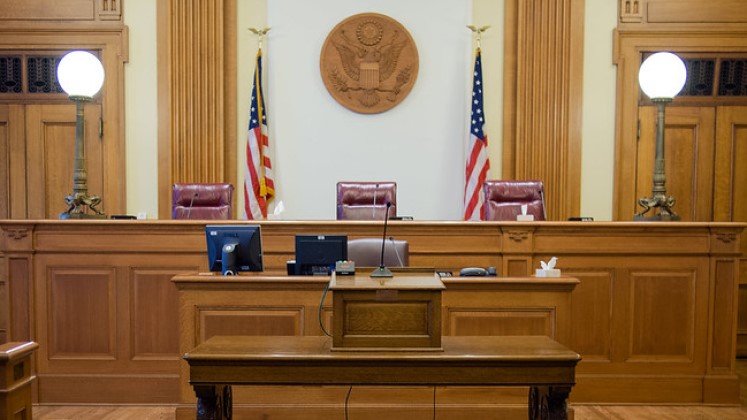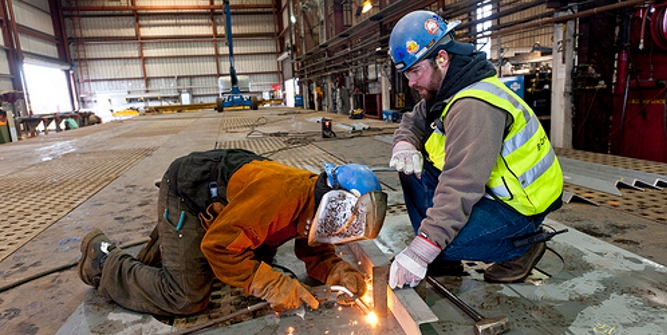 The federal government’s botched response to Hurricane Katrina in 2005 permanently damaged the reputation of the then President George W. Bush, and led to a massive shift in how the government responds to similar large disasters. Donald F. Kettl writes that in the decade since the storm hit New Orleans, the federal government’s involvement in disaster relief has grown both in terms of money and oversight — and so have tensions with localities.
The federal government’s botched response to Hurricane Katrina in 2005 permanently damaged the reputation of the then President George W. Bush, and led to a massive shift in how the government responds to similar large disasters. Donald F. Kettl writes that in the decade since the storm hit New Orleans, the federal government’s involvement in disaster relief has grown both in terms of money and oversight — and so have tensions with localities.
If you marathoned the most recent season of “House of Cards” on Netflix, you know that one major plot line hinges on a federal disaster-relief law — the Stafford Act of 1988, which authorizes the use of federal money to respond to hurricanes and other natural disasters. In the show, President Frank Underwood, played by Kevin Spacey, battles his foes in Congress over implementation of the law and just what constitutes a “disaster.”
It’s a testament not only to the arcane machinations that drive “House of Cards,” but also to the increasing importance of federal emergency funding. This month marks the 10th anniversary of Hurricane Katrina. Retrospectives on the storm instantly bring back the searing images of a drowned city, the tales of unimaginable chaos inside the Superdome shelter and the misuse of police power in trying to regain control.
Behind the retrospectives, though, are some big questions. How much should we spend on disaster relief? Who ought to pay for it? And when calamity strikes, who should be in charge? Since Katrina, new answers to these questions have emerged — and they’ve quietly but dramatically shifted the balance of intergovernmental power.
 Credit: Jon Worth (Flickr, CC-BY-SA-2.0)
Credit: Jon Worth (Flickr, CC-BY-SA-2.0)
Disaster spending is up in part because disasters themselves are becoming more frequent. In the nine-year period from 1997 through 2005, according to the Federal Emergency Management Agency (FEMA), there were 470 such events. In the following nine-year period from 2006 through 2014, there were 583. The National Oceanic and Atmospheric Administration found that the number of severe weather events — those causing more than $1 billion in damage — averaged two per year in the 1980s, but more than 10 per year since 2010. Many scientists suspect that climate change has made us more vulnerable to big storms. But, quite simply, there are more of us living in harm’s way, concentrated on the coasts and on floodplains, and where forest fires strike and earthquakes threaten.
Not only is spending on the rise, but the feds account for more of it. According to a 2012 report by the Federal Reserve Bank of New York, the federal government on average paid about 26 percent of the damage costs for major hurricanes from 1989 to 2004. Since Katrina, that’s increased to 69 percent, along with a rising expectation that the feds will pick up the tab for large-scale multistate cataclysmic events. After all, Congress has an easier political road than state and local governments in getting money for disaster relief.
But there’s no consensus on what restrictions the feds ought to place on post-disaster rebuilding in exchange for providing this greater level of aid. In the past, federal aid programs often encouraged disaster victims to rebuild in the very spots that had suffered damage. Since Katrina, that has started to change, with requirements that homes rebuilt in New Orleans be raised above typical flood levels. Following Superstorm Sandy in 2012, some local governments on the East Coast forbade any rebuilding in low-lying areas. Now, FEMA has issued a policy set to take effect next March requiring states to address climate change before they can become eligible for disaster relief.
Federal restrictions on local choices, however, often don’t go down well, especially if they come through FEMA. The agency is so despised in Texas, for example, that, before this spring’s epic floods there, citizens debated how to protect themselves from FEMA setting up detention camps as part of a martial-law takeover. (Nothing of the sort was afoot, of course.) Then, after the floods, victims urgently waited for FEMA’s help. No one really wants the government to tell them where they can live and how they must build their homes, even if the regulations reduce death and damage in future disasters. But when disaster strikes, government help can’t come fast enough.
Katrina’s other major legacy, the dispute over who’s in charge at the moment of impact, is equally tricky. Behind the scenes there’s been an enormous shift in whether and when the feds need to pull the trigger.
The government of New Orleans all but collapsed during Katrina. The Bush administration was also politically embarrassed by FEMA’s problems. In fact, after the storm the president’s political negatives rose sharply and never really returned to their previous levels.
Within FEMA and the Department of Homeland Security, a quiet consensus has emerged: There will never be another Katrina, at least in political terms. If a disaster threatens public order, the federal government will hit fast and hard.
All in all, Katrina’s legacy marks a permanent change in relations among federal, state and local governments. It shifted more of the cost of natural disasters to Washington, and it’s gradually pushed the feds deeper into what had long been mostly local decisions. More subtly, it’s also reset the trigger for federal intervention in other state and local functions, including fundamental ones such as public safety and criminal justice. Hints of these changes have sharply heightened simmering tensions about the federal government’s role, with an expectation of instant relief but an unwillingness to accept Washington’s efforts to control the costs of future disasters.
These shifts have taken place deep inside the corridors of government, without attracting much attention among Americans at large. It took President Underwood to give the general public a hint about what’s really happened in the decade since the storm.
This article first appeared at Governing.
Please read our comments policy before commenting.
Note: This article gives the views of the author, and not the position of USApp– American Politics and Policy, nor of the London School of Economics.
Shortened URL for this post: http://bit.ly/1Lh1K1J
_________________________________
 Donald F. Kettl – University of Maryland
Donald F. Kettl – University of Maryland
Donald F. Kettl is professor of public policy at the University of Maryland. He is also a nonresident senior fellow in the Volcker Alliance and in Governance Studies at the Brookings Institution. Among other books, Kettl is the author of The Politics of the Administrative Process and System Under Stress, both published by SAGE/CQ Press.






